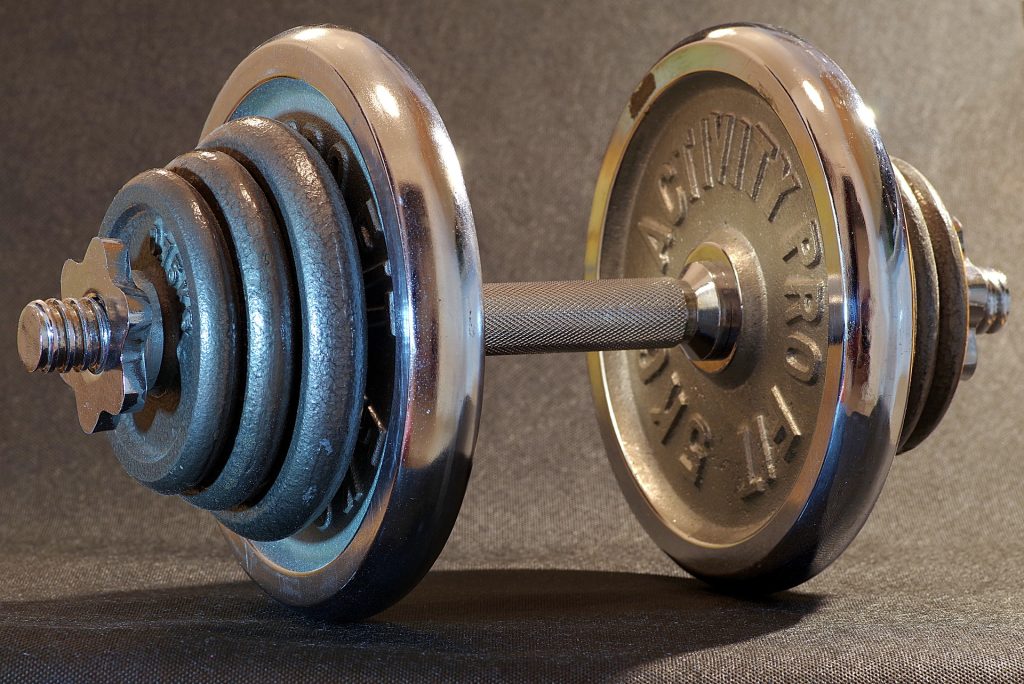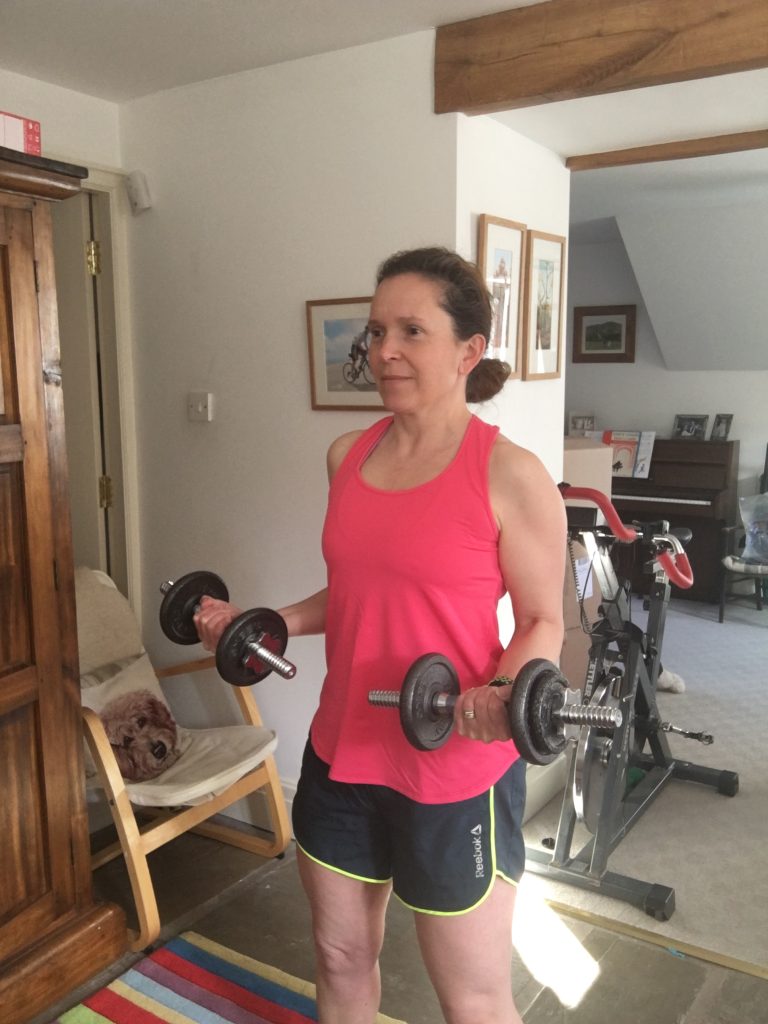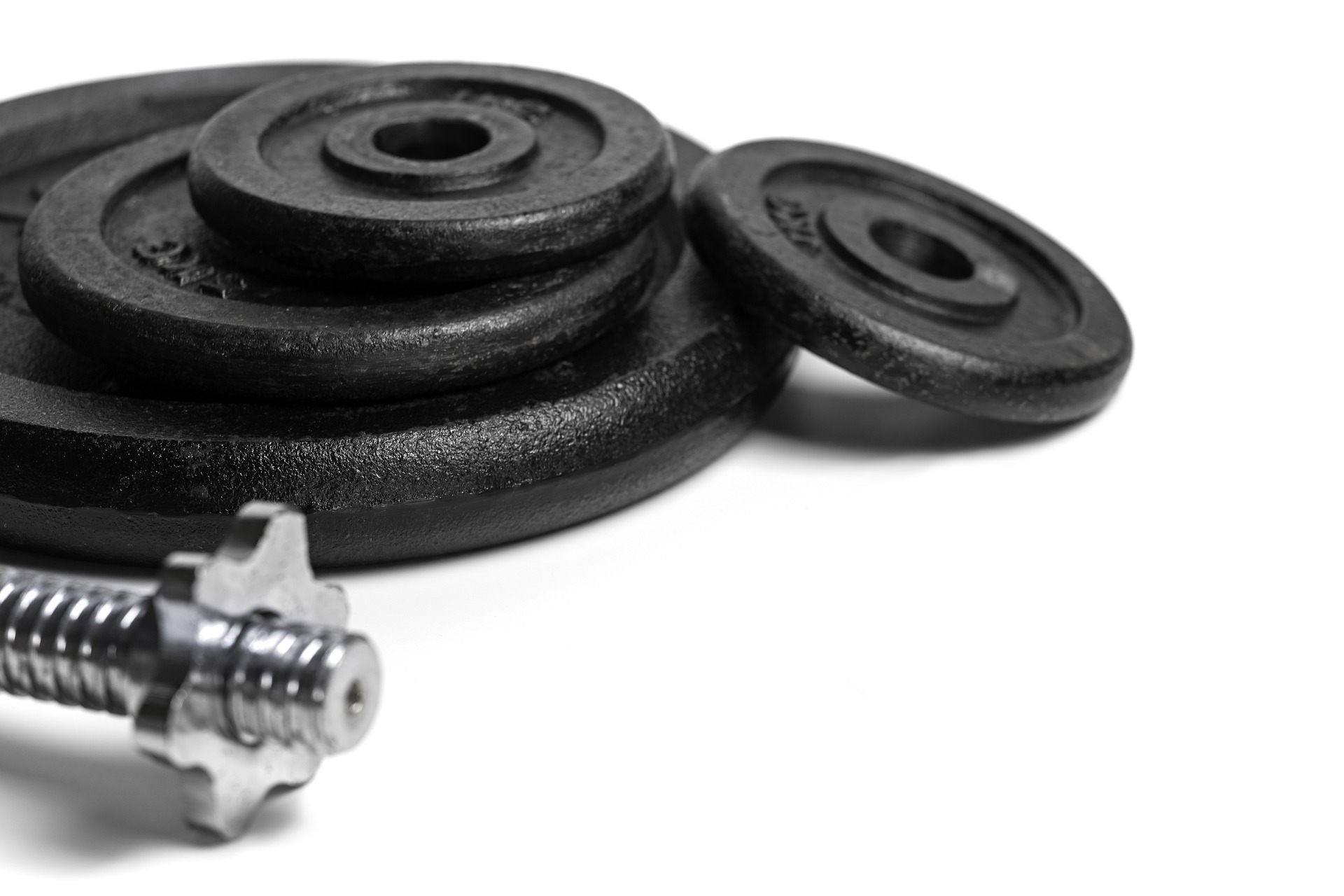There’s a growing awareness of how important muscles are for good health. This is particularly true for peri and postmenopausal women. We reach our peak muscle mass around the age of 30 and then it gradually declines. The loss speeds up around the menopause and if we don’t take action we can be at risk of sarcopenia (a condition of low muscle mass) and declining health as we age.
If you take steps now to maintain and build muscle you can help to counteract that loss and set yourself up for the future.
With strong muscles you’ll have:
• Better general health and reduced risk of many major diseases
• A lower risk of falling and injuring yourself
• A higher chance of maintaining your independence in old age
• Less body fat gain
• Better running form and efficiency
• Improved self-confidence through feeling strong and awesome!
How do I start strength training?
There are lots of barriers to strength work and one of these is simply not knowing how to start. What do you actually do? What’s the best way to start strength training? It can feel a bit confusing or overwhelming and you might find yourself standing there waving around a dumbbell and feeling a bit silly! Then there’s the issues of how heavy your weights should be, how many times you should lift them and how many times a week do you need to have a go at this thing?
I’ve been there and had all these questions. I’ve found my way through, made lots of mistakes and lost motivation plenty of times. I’m far from perfect but strength work is now a regular part of my life and while I know I can do better, I’m smug in the fact I’m making an effort. My future me will thank me and yours will too, it’s time to make a start.
Top strength training tips for beginners
I hope my tips will help you and give you the confidence to begin. That’s the first step and often the hardest one. Here are my top strength training tips for beginners:
Understand why
By reading this, you can tick this one off already! Muscles will improve your future health as well as make you a strong and efficient runner. They do far more than move your body around, they release hormones and chemicals that reduce the risk of major diseases such as cancer and heart disease. And, if you’re battling perimenopausal weight gain, they are a key to controlling it. When you understand why you’re taking an action, it becomes much easier to stay motivated to keep going.
Make time for it
While climbing stairs and running up hills will build muscle, if you’re peri or postmenopausal, you’ve reached the point where you really need to do specific strength sessions with more than your body weight, you need to lift some weights. This means you need to create time for it. Aim for twice a week, around 20 minutes should do the trick. If you find this hard then you can break it into shorter sessions. Remember, this is important and creating the time now will give you big rewards in the future. It’s hard but worth it.
Find what works for you
How you do it is up to you. We all have preferences and different things fit into our very different lives.
You could:
• Go to a gym
• Work with a personal trainer
• Join a strength classes in person
• Use online strength work out videos
• Use a fitness app
• Follow written exercises from a magazine, book or blog
There’s no right or wrong. Choose whatever is going to work for you. You can always switch. You do need some kind of direction and explanation of exercises and the above list will provide them. If you’re going solo at home then you’ll need to invest in some kit. Personally I think the adjustable dumbbell sets are better than the fixed weight ones. You can increase or decrease the weight easily and when you’re starting out you’ll probably find you increase the weight quite quickly.

Prioritise good technique
Good form while you’re lifting is crucial to avoid injury and get the most benefit from an exercise. This includes how you breathe as well as how you hold yourself. If possible, get a session with a trainer to start you off on the right track. If this isn’t possible then take time and do your homework, listen to instructions and tips carefully and exercise in front of a mirror so you can spot mistakes. My biggest tip would be to isolate the muscle that you’re working. This means keeping everything else still. So for example, if you’re working your biceps muscles in your upper arm, your core is engaged and strong, only your arm is moving, you aren’t swinging or using your back. Breath in as you slowly relax the muscle and breathe out as you stress the muscle and lift the weight.
Quality over quantity
Strength exercises are best done carefully and slowly. It’s tempting to use momentum and let weights swing (you might however do this if you’re using kettlebells). Take your time and focus on the muscle you are working. Choose a weight that you can lift about ten times. The tenth time (rep) should feel really hard and the eleventh pretty much impossible. Have a break for a few minutes – perhaps work on a different muscle and then repeat the set of reps again, you might not get to ten again. This is an effective way to build muscle. The days of light weights and lots of reps are a thing of the past. It’s better to lift fewer times with good technique than lots of times with poor form.

Consistency is key
Newbie gains are a thing! You’ll probably see a difference in your muscles within just a few weeks and be able to increase the weight you lift quite quickly. But, after that the progress will seem slower. Peri and postmenopausal women can find it harder to build muscle due to lower testosterone levels. It’s important to keep going and to be consistent. Try to build this into your weekly routine to make it easier to sustain this habit when the novelty wears off a bit! Get a friend to join in or go to a class for extra accountability.
Keep track
A good way to keep motivated is to keep track of what you are doing. Recording which weight you use and how many reps you do not only makes it easier to select the right weight next time but also allows you to see your progress. This will spur you on and you can keep looking at how far you’ve come. Even if you don’t see a difference when you look in the mirror (but I bet you will), you can be sure that you are doing yourself a favour and shaping your future.
I hope this helps. I’m a determined work in progress so I’d love you hear whether you’re planning to start and how you’re getting on. Leave me a comment here or on social media.
For more tips and inspiration, sign up for my weekly newsletter below.
Featured image by Jan Gunnar Nygård from Pixabay
Dumbbell image by Henryk Niestrój from Pixabay








Love this. An seeing more women in general now not scared to use free weights which is great.
That’s great to hear Carol